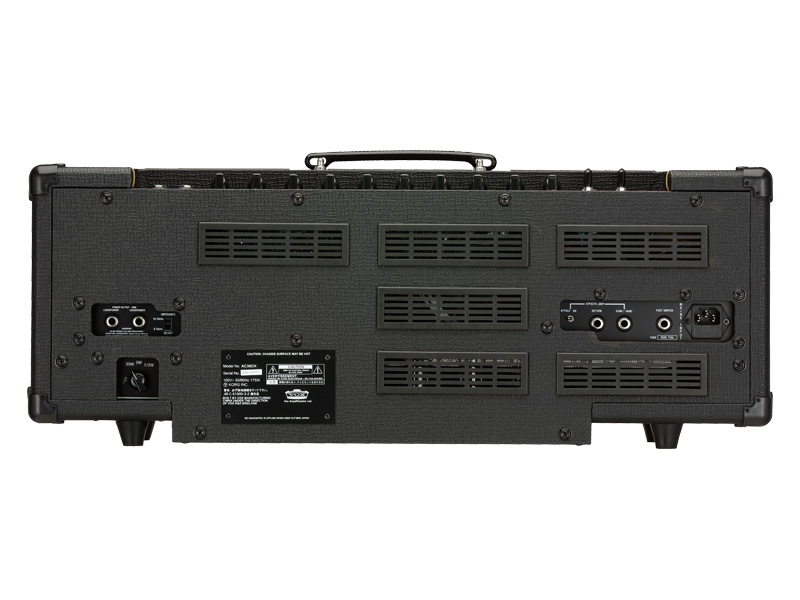

I thought the standard speaker was good too - tried swapping it for something out of an older Vox Cambridge amp and it made no difference. The originals weren't awful, but sticking some basic JJs in mine made it an awful lot warmer and richer in breakup. Seconded on getting new valves for a standard AC10. I then stuck a creamback in and it made a small difference, a little warmer, but as ICBM says not a whole lot. Unauthorized replication or use is strictly prohibited.I stuck decent valves in my Ac10c1 and it made a big difference. All copyrights are by the author and Vintage Guitar magazine. This article originally appeared in VG November 2015 issue. But the price is right, the looks are historic, and the tone summons forth the greats. Yes, the reverb’s digital (although high-quality digital), and, yes, it uses a printed circuit board. The AC10C1 is one fine-sounding piece of kit.
#VOX AC10 VS AC15 PLUS#
Plus the handle is rock-solid and should never fail you. The AC10C1 tips the scales at a mercifully light 27 pounds. This isn’t a problem, but you’ll need to learn to finesse those controls and find their sweet spot. Turn up the reverb, and at a certain point, it’s on, really on. Our sole complaint: the controls are a bit peaky. Yet you can coax high-gain overdrive out of it with a twist of the dials. The AC10C1 is an extremely responsive amp with a crisp and bright tone, which is that Top Boost at work. Plus, it’s certainly simple and portable. In addition, the new AC10 adds a digital reverb circuit, and it’s lush and wide-ranging. The original AC10 had a basic, passive treble cut control, but the new amp features an active tone control circuit with separate Bass and Treble knobs. The AC10C1 also includes a Top Boost tone circuit, as added to later AC30s. This can give you Rory Gallagher-like blues tones without having to crank the volume up to explosive levels. Dial up the Gain and overdrive the preamp while keeping the total level of the amp in check with the Volume control, which serves as a master volume. Unlike the original, the AC10C1 has both Volume and Gain controls. Plus it includes a key feature that helps your sound while making that noise.

It might not have the drive, volume, or smoothness of a ’60s AC30, but it’s still lovely and instantly evocative. Plugging in, the first thing you notice is that smooth Vox sound.


The single 10″ VX10 speaker is made by Celestion and mounted in a closed-back cabinet that’s close to the size of the original AC10 Twin. The AC10C1 puts out 10 watts, more than enough to make some noise in the studio, small clubs, or the garage. This differs from the original’s six-tube setup, but it shares the fundamental preamp-output tubes. It’s based on two ECC83/12AX7 preamp tubes and a pair of EL84 output tubes in Class A design. While the original was a dual-channel amp with four inputs, the revived version is a single-channel affair with one input. The design is focused on tone at a reasonable price. (Brian May’s Red Special would have been nice to try, too – if only.) For now, only a black version is available, but hopefully, a fawn version will come along (as well as some more colorful options – red or purple, anyone?).Īs befitting the amp’s history, we tried it out with an assortment of suitable guitars: a ’64 Rick 365, a ’56 Strat, and a ’60s Classic Les Paul. It’s got all the right stuff to mirror the classic ’60s model. Yet the 10 now includes more desirable bells and whistles than ever before. And just as in the olden days, it slots nicely between the revived AC4 and AC15. And so, happily, is the AC10.Įxactly 50 years after the original was discontinued, the new AC10C1 joins Vox’s Custom Series, its flagship line of tube amps (make that, valve amps). A 2×10 came along in ’63, but as rock and roll got louder and required more oomph, the AC30 became Vox’s new mainstay and the single-speaker AC10 was retired in ’65 (followed by the demise of the Twin in ’67).įunny thing, though: times change, and the demand for sweet-sounding smaller amps is back. The AC10 boasted 12 watts output through a 10″ speaker. Way back in 1959, Vox introduced its AC10 to bridge the gap between the pro’s AC15 and the student’s AC4. The golden nameplate, that distinctive crisscross speaker fabric, that black or fawn Vynide basket-weave covering, that tone – it all instantly evokes the Beatles, the Stones, Queen, and so many more greats. Info: Few amps give such an instant jolt of history as a Vox.


 0 kommentar(er)
0 kommentar(er)
